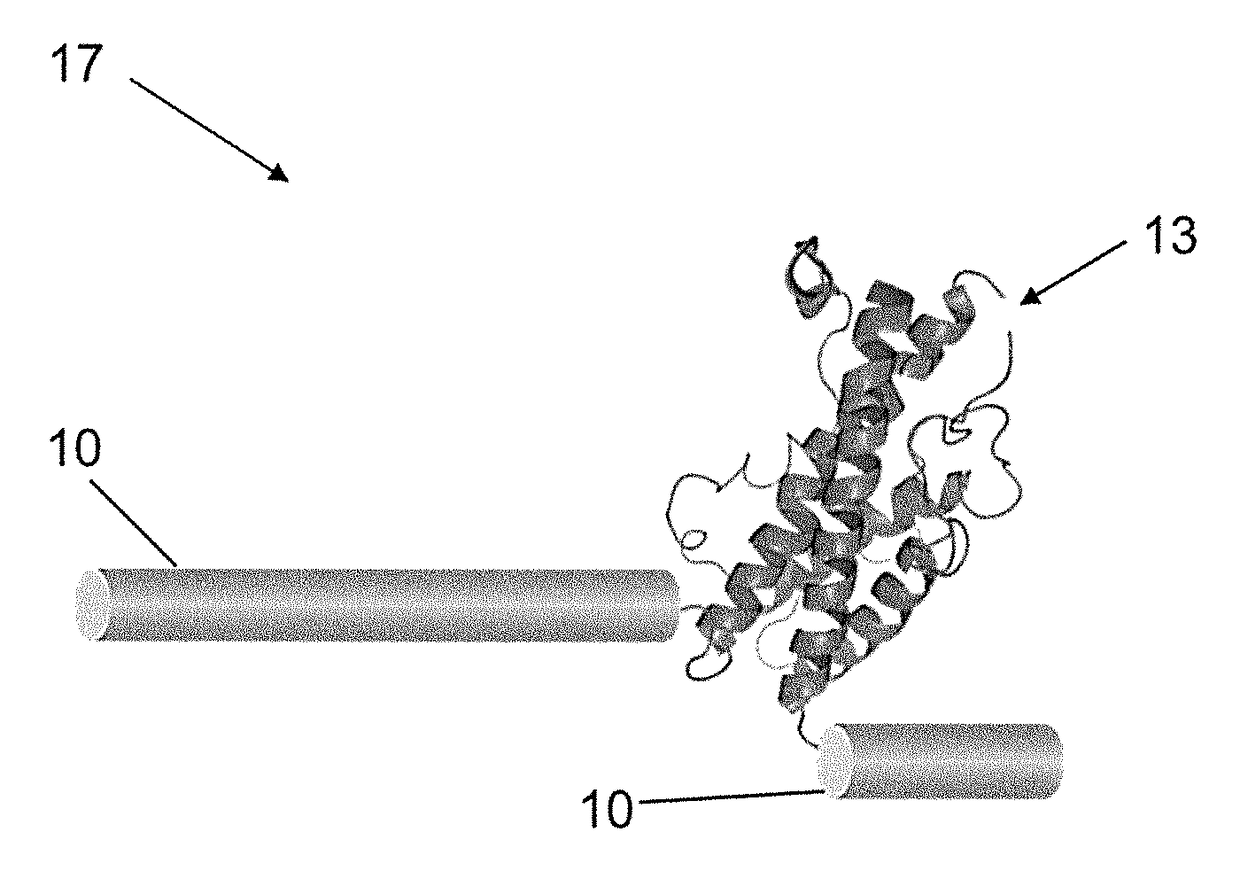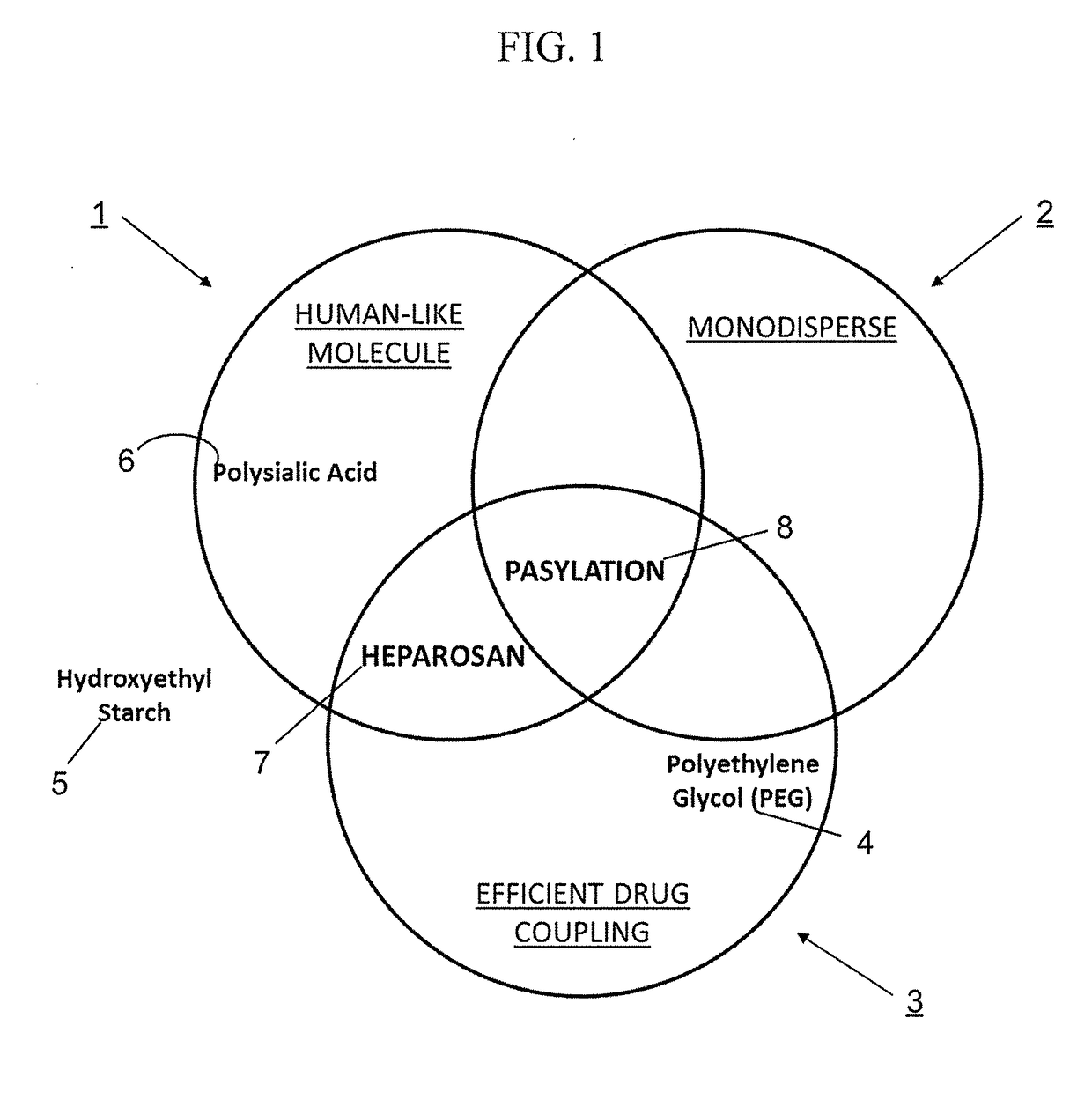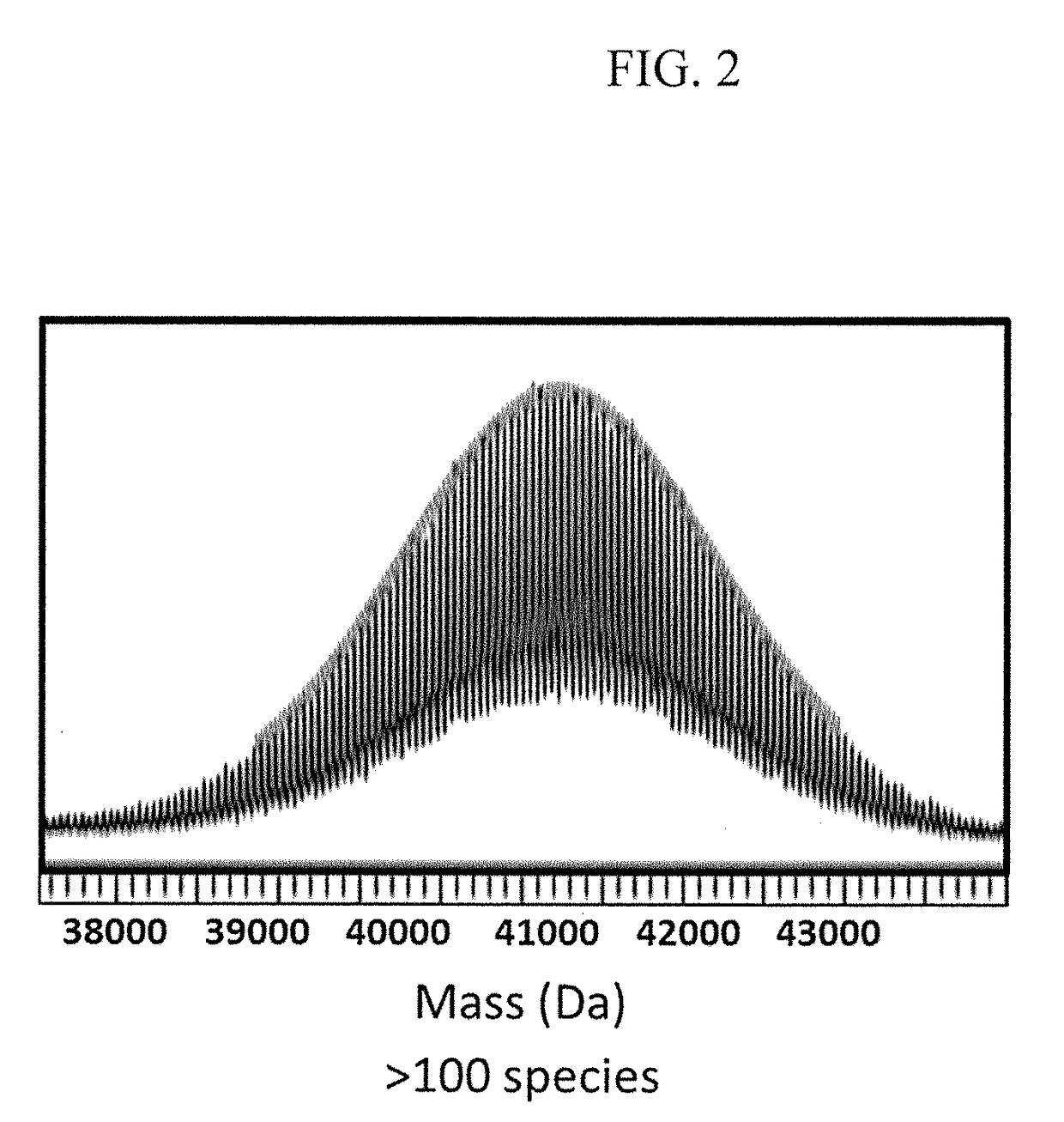Compositions and methods of using a soluble TNF-alpha receptor modified for increased half-life
a technology of tnf-alpha receptor and composition, which is applied in the field of half-life extended forms of biopharmaceutical compositions, can solve the problems of refolding during the purification process, severe recalcitrance, and high cost of goods, and achieves the effects of preventing the progression of disease or condition, reducing the risk of refolding, and improving the effect of refolding
- Summary
- Abstract
- Description
- Claims
- Application Information
AI Technical Summary
Benefits of technology
Problems solved by technology
Method used
Image
Examples
examples
(7-14)
[0127]
TABLE 2Half- Life ofHalf-Life ofUnmodifiedModifiedFoldEx.MoleculeMoleculeIncreaseNo.Protein SampleStudy Model(h)(h)in Half-Life7OmC1 + 600 PAS polypeptideMouse0.284.29158Leptin + 600 PAS polypeptideMouse0.4319.6469IFNa2b + 600 PAS polypeptideMouse0.5226.05010IFNanta + 600 PAS polypeptideMonkey0.2819.46911hGH + 600 PAS polypeptideMouse0.054.428812Exendin + 600 PAS polypeptideMouse0.1716.19513sTNFRI + 30 kDa PEG polymerHuman0.85829614sTNFRI + 600 PAS polypeptideHuman*0.85>216>254*On the basis of interspecies allometric scaling as shown in FIG. 12 for a 60 kg body weight.
Impact of PASylation® on Different Payloads
[0128]Table 1 assessed the effect of varying lengths of PAS polypeptides on the half-life of a common payload. Examples in Table 2 documented the effect of using one type and length of PAS residues (PAS 600) on different payloads. The data were ranked in terms of Fold Increase in Half-Life (far right column). The nature and type of payload under consideration for h...
PUM
| Property | Measurement | Unit |
|---|---|---|
| molecular weight | aaaaa | aaaaa |
| molecular weight | aaaaa | aaaaa |
| molecular weight | aaaaa | aaaaa |
Abstract
Description
Claims
Application Information
 Login to View More
Login to View More - R&D
- Intellectual Property
- Life Sciences
- Materials
- Tech Scout
- Unparalleled Data Quality
- Higher Quality Content
- 60% Fewer Hallucinations
Browse by: Latest US Patents, China's latest patents, Technical Efficacy Thesaurus, Application Domain, Technology Topic, Popular Technical Reports.
© 2025 PatSnap. All rights reserved.Legal|Privacy policy|Modern Slavery Act Transparency Statement|Sitemap|About US| Contact US: help@patsnap.com



